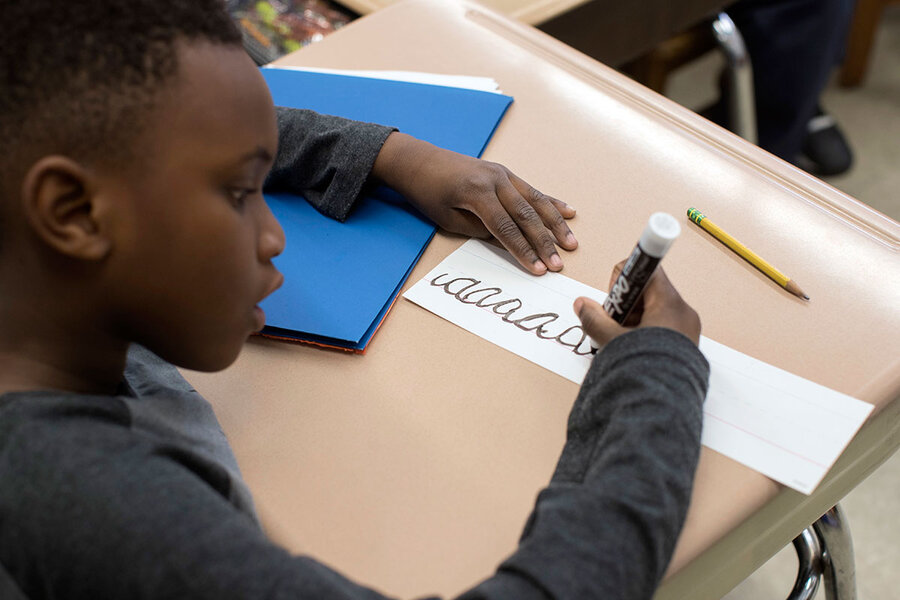A comeback for cursive? More states encouraging penmanship in school.
Loading...
Cursive, the art of penmanship cast aside in recent years as schools increasingly focus on keyboarding, may be getting a second act.
Last year, Alabama and Louisiana became the latest of 14 states to pass laws requiring cursive proficiency in public schools. And in the fall, New York City Schools – the country's largest school district, with 1.1 million students – encouraged teaching cursive to elementary school students.
As we as a society find ourselves relying more and more on computers, cell phones, and other forms of technology to communicate and express ourselves, many educators have declared cursive an unnecessary skill. In 2010, most states adopted the Common Core curriculum standards, which don't mention handwriting.
But proponents of cursive say it provides students with the practical skills to take notes more quickly, read and understand a broader range of documents, and sign their name in a more aesthetically pleasing way. And some suggest that the benefits go beyond practical: cursive, they say, can encourage creativity, allow young people to more easily express themselves in writing, and even boost SAT college entrance exam scores.
A study published in 2012 that examined the writing habits of Canadian second-grade students found that students learning cursive benefitted more in their work than students who only learned print, as The Christian Science Monitor reported at the time:
The development of automatic motor movements, the study suggested, was key – when you can write in a smooth, no-thought-required manner, you can concentrate on expressing yourself, not on grinding out each individual word or letter. Cursive in particular forced students to develop a stroke order that resulted in no backwards letters, and it also pushed students into laying down proper word spacing.
The study didn't, however, account for a future where handwriting could potentially be replaced entirely by typing on computer keyboards – a method that some penmanship skeptics argue is even more conducive to self-expression than cursive.
"Your hands aren't fast enough to keep up with your mind," Steve Graham, now a professor in Arizona State University's Mary Lou Fulton Teachers College, told the Monitor in 2007, "especially for a first grader who can write between nine and 18 letters a minute. Typing uses a different, slightly easier motor skill. If they spend less time thinking about their handwriting and more time writing,... they will have longer compositions and better grammar and planning."
But handwriting is still required of students in some situations, such as on the SAT and other standardized tests. And past data indicates that students who write their essays in cursive have done slightly better on the SAT than those using another form of handwriting. While Professor Graham and other critics are skeptical that this correlation implies causation, cursive supporters point to the data as evidence that cursive allows students to write faster, resulting in longer essays.
Other benefits of teaching the lost art of cursive, some proponents say, can't be quantified through studies and test results. As Robert Klose wrote in a column for the Monitor in May:
Perhaps the strongest argument for the retention of cursive is that it is, or at least can be, beautiful. If you have forgotten this, take a look at Magna Carta, the US Constitution, and the Bill of Rights. Text typed on a computer is not beautiful because it is not distinctive – my Helvetica font is the same as yours or anybody else’s.
In times of budgetary trial, schools often jettison music and art instruction (but retain sacrosanct football). If cursive joins those refugees from the curriculum, then it will be the loss of yet one more outlet through which students are able to say, “This is my mark. This is me.”
This report includes material from the Associated Press.








